Relics of many tales
Updated: 2016-07-19 07:40
By Wang Kaihao(China Daily)
|
||||||||
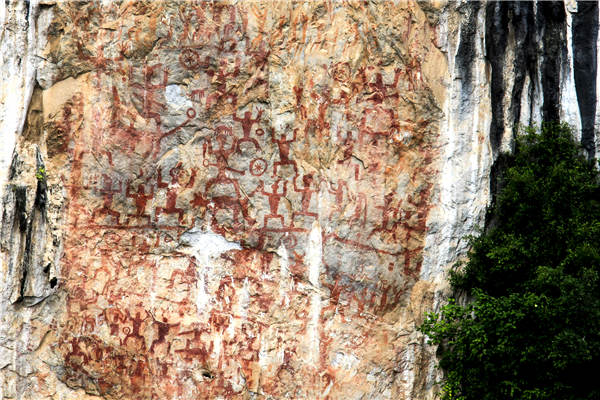 |
|
The rock paintings mostly feature squatting human figures. |
Mysteries remain
The pigments in the paintings have been mixed with minerals and oxalic acid derived from local plants to protect the red color from fading.
Describing the paintings, Zhu says: "Squatting human figures are common in prehistoric rock art all over the world.
"But nowhere else do you see so many squatting human figures as in the Zuojiang art. This could mean that the Luoyue people were very devout."
But the other possible explanation for the squatting figures, he says, could be their resemblance to frogs, which is typically connected with virility in such art. Worshipping a "frog deity" was also common among communities that cultivated paddy.
Despite the studies, many mysteries still remain.
For instance, why the artists suddenly stopped doing rock art and what happened to the creators is unclear. Also, how the motifs were drawn so high up-some in spots 60 meters above the river-is still being studied. And, while the locals see the site as a forbidden territory, outdoor adventurers have been drawn to it.
Wang Yuguang, who used to patrol the rock art sites for 20 years, says: "People from outside may not see the site in the same way that we do.
"They used to come and climb the rocks. They did not aim to destroy the paintings, but if we did find fallen pieces of rock, we would glue them back."
Wang, who retired in 2008, says he used to patrol the site four to five times a day to check the cliffs.
In 2009, the biggest rock art site in Ningming was closed to visitors, and visitors were allowed to view it only from an observation deck.
Separately, the State Administration of Cultural Heritage allocated 7 million yuan ($1.04 million) to set up a monitoring and data analysis system in 2015 as a better way to manage the area.
- African Union opens with launch of continental passport
- Baton Rouge shooter identified as ex-Marine Gavin Long
- Navy chiefs set for fresh talks on South China Sea
- Arrests hit 6,000 as Turkey cracks down on army and judges after coup bid
- A close look at Theresa May's new cabinet
- More than 70 dead in Nice attack as France marks national day
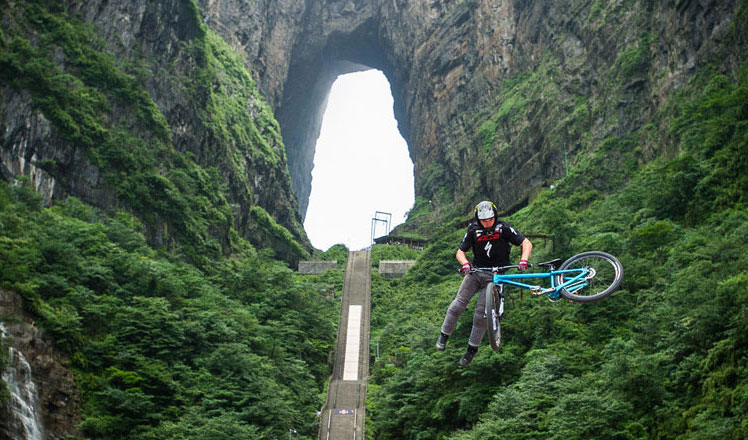
 Uphill battle for cyclists in downhill race in Zhangjiajie
Uphill battle for cyclists in downhill race in Zhangjiajie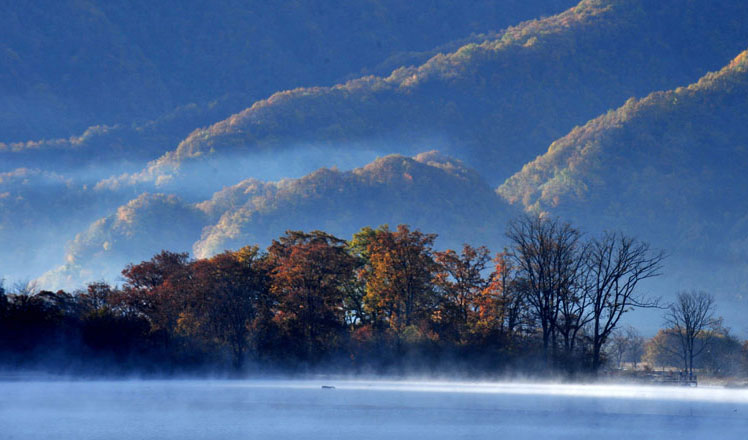
 Shennongjia added to World Heritage List
Shennongjia added to World Heritage List
 Campers sleep perched on cliff face in Central China
Campers sleep perched on cliff face in Central China
 Two giant pandas meet public in NE China
Two giant pandas meet public in NE China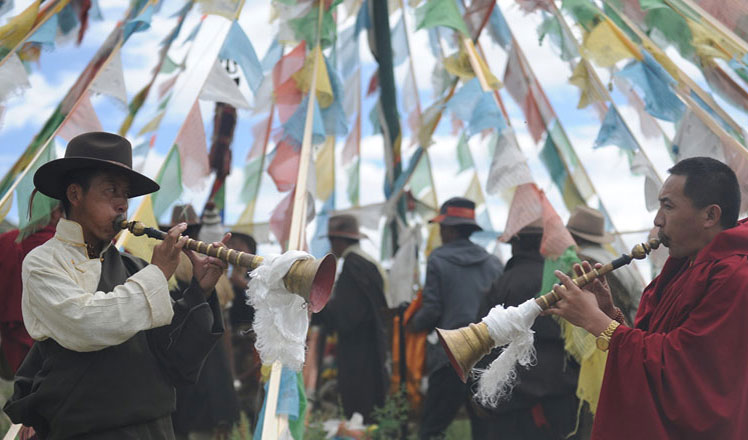
 Ongkor Festival celebrated in Southwest China's Tibet
Ongkor Festival celebrated in Southwest China's Tibet
 The world in photos: July 11 - 17
The world in photos: July 11 - 17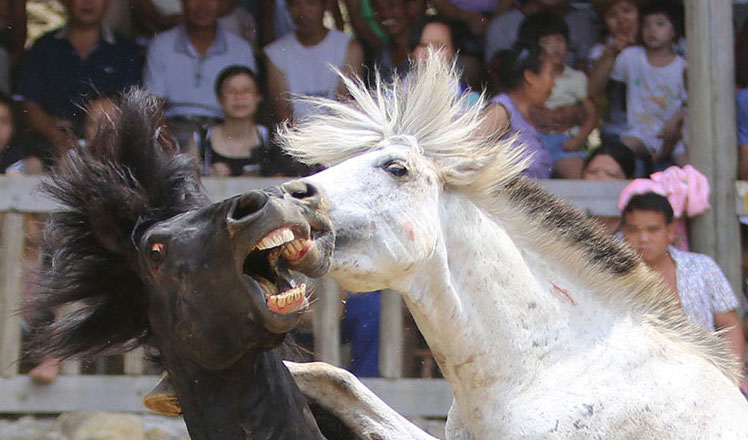
 Ten photos from around China: July 8-14
Ten photos from around China: July 8-14
 The only surviving panda triplets weaned from milk
The only surviving panda triplets weaned from milk
Most Viewed
Editor's Picks

|

|

|

|

|

|
Today's Top News
Ministry slams US-Korean THAAD deployment
Two police officers shot at protest in Dallas
Abe's blame game reveals his policies failing to get results
Ending wildlife trafficking must be policy priority in Asia
Effects of supply-side reform take time to be seen
Chinese State Councilor Yang Jiechi to meet Kerry
Chinese stocks surge on back of MSCI rumors
Liang avoids jail in shooting death
US Weekly

|

|







